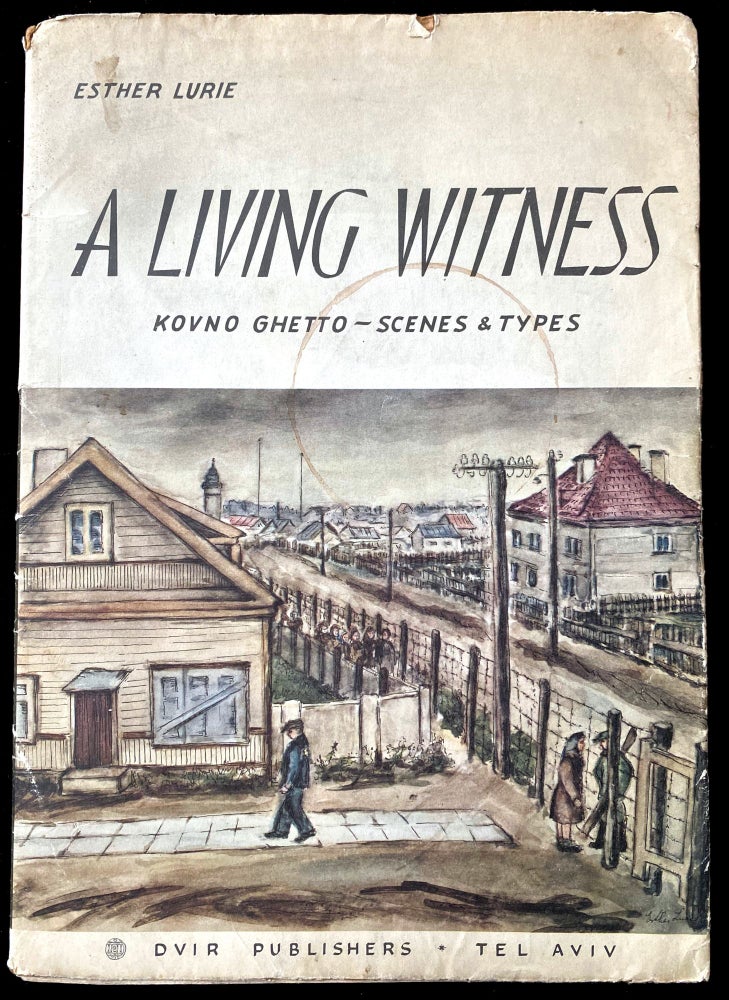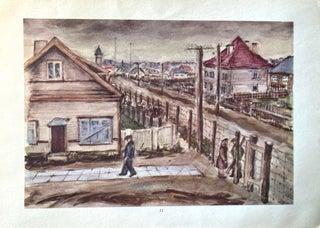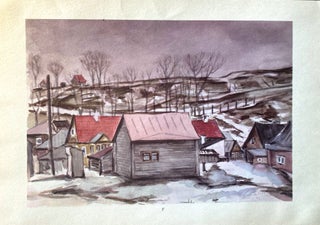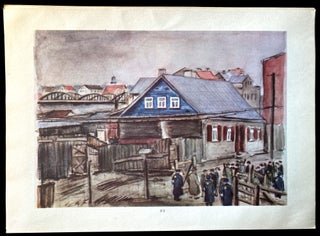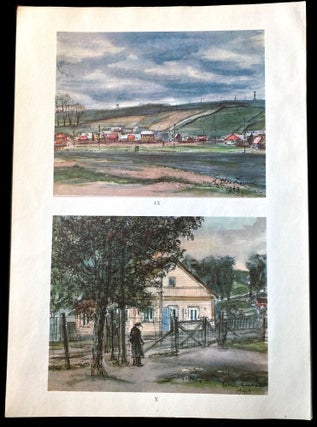A LIVING WITNESS : KOVNO GHETTO : SCENES AND TYPES, 30 DRAWINGS AND WATER-COLOURS
Tel-Aviv, DVIR Publishers, 1958. Item #42047
Portfolio with Paper Dustjacket. 20 black and white sketches and 10 watercolors. With accompanying text by Esther Lurie. Esther Lurie [1913-1998] was born in Liepaja, Latvia, to a religious Jewish family. From 1931-1934 she learned theatrical set design at the Institut des Arts Décoratifs in Brussels, and afterwards studied drawing at the Académie Royal des Beaux-Arts in Antwerp. In 1934 Lurie migrated to Palestine with most of her family and worked at various artistic activities. In 1939 she travelled to Europe to further her studies. World War II had begun while she was in Lithuania and during the Nazi occupation (1941-44) she was imprisoned in the Kovno ghetto along with the other Jews. As soon as she entered the ghetto, in mid-1941, Lurie began to sketch views of her new world. She has left behind a detailed written testimony of her life and work during World War II. This combination of literary and visual testimony make up a "living witness". Lurie drew everywhere in the ghetto, including the various workshops. Including a pottery workshop. During her visits there, Lurie got the idea of asking theJewish potters to prepare a number of jars for her. She would use these to conceal her art works if the situation worsened. After the deportation of 26 October 1943, in which 3,000 ghetto inmates were removed to forced labor camps in Estonia, Lurie hid her artcollection, approximately 200 drawings and watercolors, in the large jars she had prepared in advance. In July 1944, as the Red Army approached Lithuania, the ghetto was liquidated and those remaining were transferred to concentration camps and forced labor camps in Germany. The ghetto was set on fire and the buildings were blown up and burnt to prevent those hiding from escaping. Esther Lurie was sentto Stutthof concentration camp, leaving her hidden works behind. After the war some of her drawings were recovered, surviving with the Ältestenrat's archive. Avraham Tory succeeded in rescuing 11 sketches and watercolors and 20 of the photographs of her works. During the Eichmann trial, which took place in Jerusalem in 1961, Lurie's SecondWorld War works were exhibited as part of the testimony - giving an "official authorization" from Israel's Supreme Court to the rich documentary value of her sketches and watercolors. This is in addition to their aesthetic value as objects of art. SUBJECT(S): World War, 1939-1945 -- Pictorial works. Jews -- Lithuania -- Kaunas -- Holocaust, Jewish (1939-1945) -- Guerre mondiale, 1939-1945 -- Ouvrages illustre´s. Juifs -- Lituanie -- Kaunas -- Holocauste, 1939-1945 -- Ethnic relations. OCLC: 848164. Light edgewear & stain to portfolio & dustjacket, text and plates remain very clean and dramatic. Overall very good condition. (HOLO2-98-15C).
Price: $100.00


